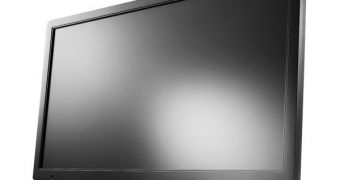IPS panels trade some of the brightness and image quality for wider viewing angles, but PLS screens don't have that drawback, which is why I-O Data decided to put them to good use when it made the MF275XPBR.
MF275XPBR is the newest addition to the company's collection of LCD monitors (liquid crystal displays).
As said above, the PLS (plane-to-line switching) LCD panel provides the same image quality as TN (Twisted Nematic) panels, but also wide viewing angles of 178°/178° (horizontal/vertical).
Of course, the price is sure to be a few bucks higher than for standard TN screens, or normal IPS screens, but that shouldn't be too much of a problem.
The Super PLS panel was made by Samsung, if anyone was wondering, and uses LED backlighting like any other self-respecting LCD of today.
Between the two, the numerical parameters of the MF275XPBR 27-inch monitor are quite encouraging. Enough to make one sad that shipments aren't expected to begin until the middle of November.
And even then, only the Japanese will be lucky enough to be within reaching distance of it, but we digress.
The newcomer has a brightness of 300 cd/m2, a native resolution of 1920 x 1080 pixels (Full HD), three display inputs (DVI, D-Sub and HDMI) and a contrast ratio of 1000:1 (dynamic mega-contrast ratio), an ECO mode (lower power draw by 30%) and two speakers.
There is one serious disadvantage though: the response time. It's so long, at 15 ms, that using this monitor for, say, high-speed FPS games is not advised. Even when the display overdrive feature is used, the response time becomes of just 8.3 ms.
Considering that 5ms is considered average as far as most monitors go, and that there are displays with 4 ms, 3 ms and even 2 ms and 1 ms, this drawback could be a deal breaker for many.

 14 DAY TRIAL //
14 DAY TRIAL //